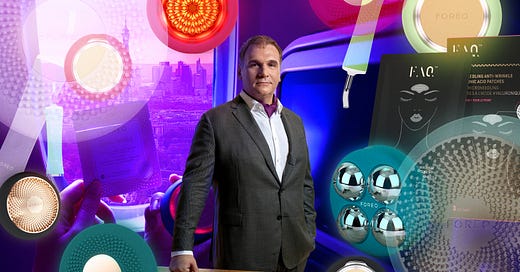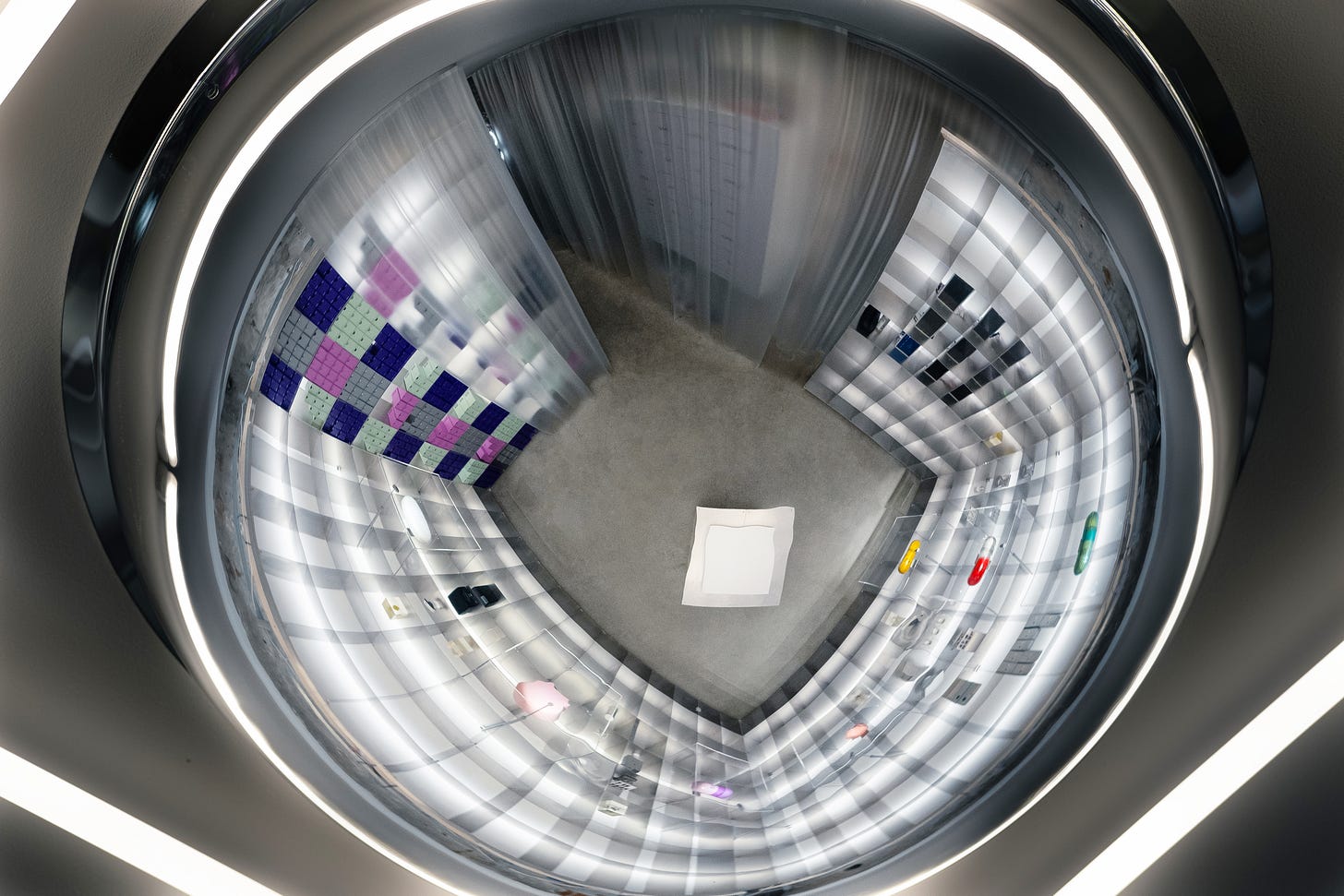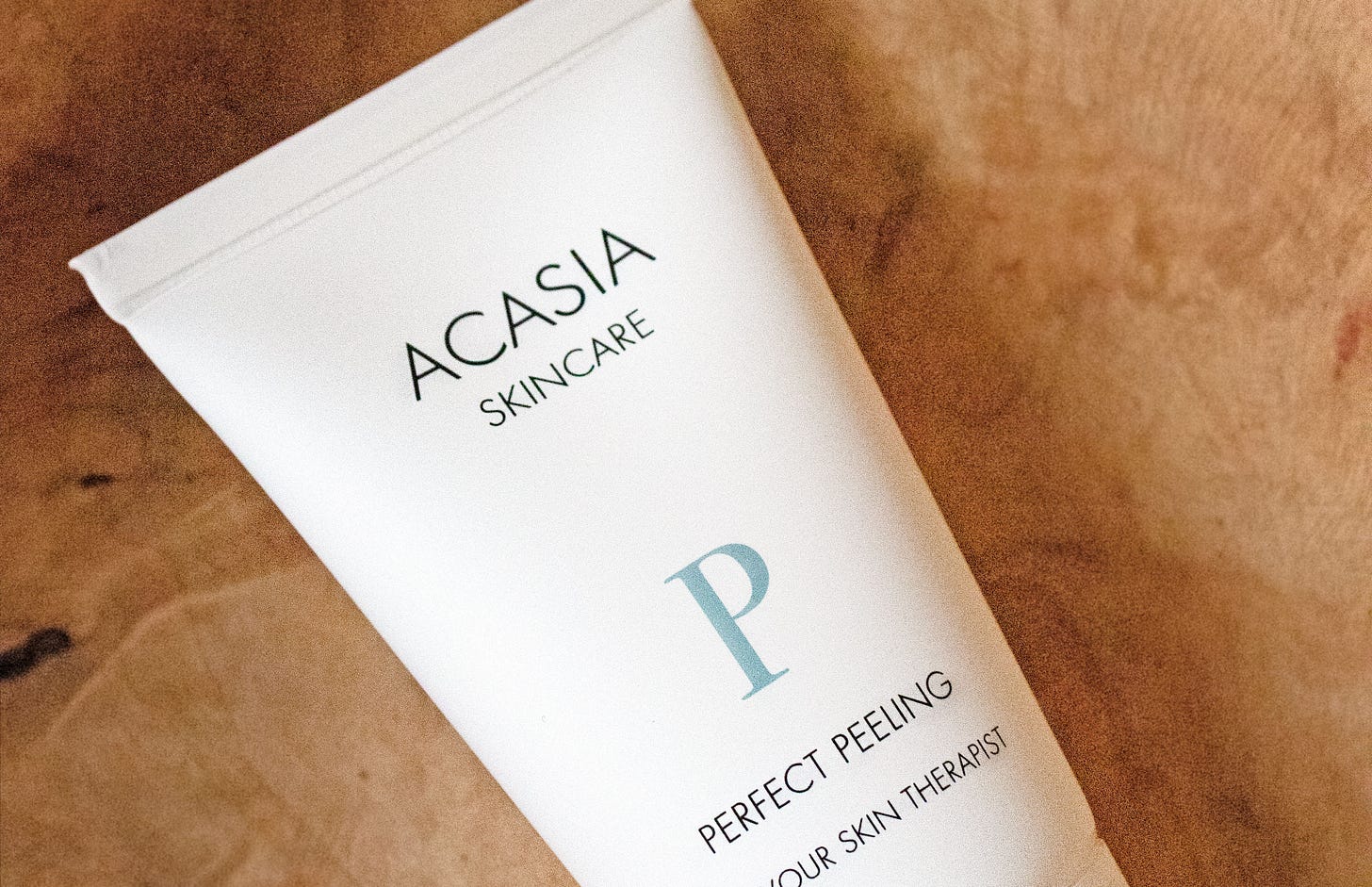The Foreo founder on how to elevate beauty-tech
Filip Sedic’s mythbusting on the conscious Europeans, Plus: a gateway for men’s health and our 4 favourites from last week’s beauty event in Stockholm.
IN THIS ISSUE
Filip Sedic, founder and CEO of the beauty-tech pioneer Foreo, suggests that the next big thing in beauty-tech is the merger of beauty and medical
Consumer confidence shows ”renewed optimism”
The beauty-tech market growth in numbers
Join our paid newsletter
This is the 12th issue of Beauty Innovation and the last one that is completely free. Enjoy our early access offer below to follow our weekly insights from the beauty industry when the trial period is over.
New perspectives
Over the years, I’ve met countless industry executives. At first within fashion and, lately, more and more in beauty. They’re often very similar in behaviour; urbane, talkative and very, very polite. I tend to ask myself whether they truly admire Scandinavia, our nature, brands, the digital-first mindset within retail and all the other areas they tend to praise, or if they say similar things in Germany, the UK, or Japan when the PR tour continues.
That was also why it felt so refreshing to meet Filip Sedic, who founded Foreo in Sweden 10 years ago. Now the world’s leading beauty-tech brand with an estimated annual revenue of almost $300M, Filip has left his home soil for Hong Kong. Largely thanks to new perspectives, it seems, he explained to us how beauty in Asia is moving away from the US and, most of all, Scandinavia and Europe — which he described as ”the last ones” to jump on things — in terms of tech, innovations, and trends. In this week’s insight piece, he also explains how this development might be rooted deep down in our mindset.
Often praised as the ”early adopter” defined, quick and curious about new food, trends, and entertainment, and, perhaps most of all, well-capitalised, it’s been a wet dream for brands to enter the Scandinavian market for a long time. We obviously remain a frontrunner in sustainability and the fact that Foreo and many other beauty innovators were born here clearly says something. However, if not before, Filip’s words should serve as a wake-up call for our region. And in a recent interview that we published for Stockholm Fashion District, Lena Sellgren, Chief Economist at Business Sweden, stated:
”The Western world is the part of the world that has had a weakness with a high inflation rate and policy rates. It’s not the case in, for example, the Asian Pacific region. So we will see the global economy being driven more by demand that we have in that part of the world. And now, the opening of the Chinese market, will mean that from a Swedish export perspective, there will be a demand here, while most of our export, 74%, is directed towards Europe, where we have the weakness. Looking ahead, it’s an opportunity for companies that are well-capitalized to gain market shares if they do it in a smart, good way and work very close to the markets where they have their customers.”
It’s about time to reevaluate and widen the perspectives here. Two weeks from now, the second edition of Cosmoprof CBE ASEAN will take place in Bangkok. I don’t think that I’m the only one who will keep an extra eye on new Asian startups, beauty-tech, and innovations showcased there. Who knows? Two or three years from now, it might turn up on our doorstep.
Also in this issue, we let Gustav Grippe, founder and CEO of new venture Supernormal, explain how to modernise men’s health. Entrepreneur and skin therapist AnnaKarin Wahlberg presents what a modern peeling product shall include. And, just as expected, we found a bunch of exciting product launches at Daisy Beauty Expo in Stockholm last weekend, and share our favourites in a special roundup. Teaser: It includes beauty-tech — from Europe.
KEY TAKEAWAYS
Are Scandinavia and Europe ”the last ones” to jump on things?
The Western world is the part of the world that has had a weakness with a high inflation rate and policy rates. Still, 74% of Swedish export is directed towards Europe
Looking ahead, it’s an opportunity for companies that are well-capitalized to gain market shares
We look forward to having you with us in the weeks to come. Until next time!
CHART OF THE WEEK

SCANDINAVIAN MIND X TRADE PARTNERS SWEDEN
Trade can be complex — but important help is just one click away
We speak to Helena Waker, CEO of Trade Partners Sweden, on why a strong network of experts is key when growing a beauty brand.
TOP STORIES
This week’s top stories and interviews from scandinavianmind.com
4 product launches we liked at Daisy Beauty Expo
Here are the highlights from the leading Scandinavian beauty media and influencer event in Stockholm last weekend.
Supernormal just opened a ”gateway” for men to test, treat, track, and optimise their health
Following an invitation-only space, the startup soon opens to the public, presenting a special product for the brain and with the goal of removing the stigma around health problems related to sex.
Acasia mixes talked-about acids and plant extracts in new peeling launch
Meeting the big ”gentle yet effective” trend.
WORLD VIEW
A briefing on innovations in the global beauty industry
Unravelling eco-friendly buzzwords: A guide for ethical beauty entrepreneurs
Maddyness: In today's beauty industry, the allure of eco-friendly products and sustainable practices is more enticing than ever. However, behind the glitzy packaging and catchy buzzwords lies a disconcerting truth: greenwashing and false advertising are rampant, leaving well-intentioned entrepreneurs in the dark about the true impact of their products.
Perfect Corp. Highlights the Exponential Rise of AI in Beauty Tech
mid-east info: While multiple industries have been using AI and AR for years, its applications within the beauty, fashion and skincare space has been truly game-changing. Particularly as pandemic-era precautions forced consumers to shop remotely, traditionally tried-on products like clothing and cosmetics had to adapt to the times.
Consumer confidence shows ‘renewed optimism’ against falling inflation
TheIndustry.beauty: The beauty industry is undergoing a significant transformation, driven by advancements in technology and the influence of social media. As we look towards the future, it’s clear that beauty tech will continue to reshape the industry, offering new ways for consumers to discover, try, and buy products.
INTERVIEW
Foreo founder Filip Sedic on how to elevate beauty-tech
By JOHAN MAGNUSSON
The entrepreneur has more than 200 patents assigned to his name. The next big thing in the sector, he suggests, merges the beauty and medical segments in a quite unprecedented way.
Sedic is now based in Hong Kong where he is experiencing a special year with Foreo. A bunch of new launches, including the company’s brand new label FAQ — described as the anti-aging expert brand — are all part of its 10th anniversary.
— Now, I visit our offices around the world and talk about them and their functionality, how to educate the customers, and how we will introduce them on the market, he tells us during a rare visit to the Stockholm HQ.
How have these first years been? And how has the beauty-tech market changed?
— We do see new brands that are making progress popping up only in Asia and not in the rest of the world. I’m looking forward to seeing more companies investing in development and making this category stronger because it’s an absolutely needed category. Or even the most needed category, if you think in terms of the beauty and health of the skin. Painting your skin in a beautiful colour or having beautiful textures and smells is not going to help keep your skin healthier in the long term…
— The vast majority of products are the fake versions of our products — not as many as they used to be five years ago but still a substantial part. The R&D, clinical, and medical testing cost a lot of money, so if you can just copy someone else and put a lower price, it’s still perceived as a ’winning area’. In 2018, according to the official Chinese custom numbers, we were the most copied brand in the world, including LVMH, Hermes, and everyone. And at that time, we had just one SKU (Stock Keeping Unit). They estimate that 80 million copy products crossed the border only in 2018 — and at least 100 million stayed in China. If I remember it right, we sold about 20 million products that year — in total. It’s mindblowing.
How have you seen consumer behaviour change throughout this decade?
— Our number one problem is the education of the customer. The problems that we have are complex and we need to have complex solutions. But in this time, people are more and more lazy, appreciate convenience and are not really willing to learn a lot of new things, if it is not straight into their face. During the pandemic, people were bored and had more time to watch YouTube videos, read more, and get educated.
— And it’s not equal around the world. Chinese and Asians, in general, are always on the top front, very well-educated and curious about things. The US is somewhere in the middle and Europeans, unfortunately, are always the last ones. We have some kind of perception that if you’re curious and want to learn something, it’s embarrassing, showing that you don’t know. So, it’s not on the same level all over the world — yet, says Sedic.
When speaking to brand representatives, many of them say that Scandinavia is at the very front when it comes to adapting to new technologies. But you disagree?
— Absolutely. And that is exactly the problem and why we in Scandinavia are so much behind; we believe that we are in front and if you believe that you are in front, why should you do something to change that? Believing that you are doing good is actually making you handicapped to really do something good — why should you fix something that already works? Or, at least you perceive that it’s working…
Good point. How do you work to educate your consumers?
— We tried gamification but it’s a bit too complex. It takes a minute or two just to explain the basic things about how to use it, what it’s for, and how it works, so the video format and YouTube are working the best. But we can’t really rely on that people will give a couple of minutes and listen and learn. So we’re trying to find the best format of educating customers but we are also working very hard on the product development side to make the product look and feel and operate as easy and convenient as possible.
— It’s like 20 years ago if you bought a professional camera, you would need to know how to set the focus and ISO to get a good picture. Now, you can just click a button and the electronics will do all the settings for you. It’s definitely the easier way instead of educating customers in detail about how everything works, so we are trying to have everything built into the products to just press a button.
You’ve always aimed to be a leader in innovation. What are the keys for you in order to maintain that position?
— For innovation, an organisation or people are either innovative or not. I’m always very surprised by companies claiming that they are innovative. They might have innovative products but when you look at how they work — everything from production to logistics, sales, and marketing — they do like every other company. This has always bothered me: How can you be innovative in only one thing and very conservative in everything else?
— I see innovation as a kind of personality trait. At Foreo, it’s not just about the products but being innovative in everything. How we do production, the shipping when we needed to invent our own shipping boxes, solar power solutions in our factories, and how we do marketing. We are trying to find innovative solutions in every aspect of the company’s existence, not just the product itself. It should be considered as ’a one’.
Speaking of innovation, we’ve featured your NFT launch and beauty brands are slowly moving into the digital worlds. Do you have any plans for more launches?
— Digital is very, very broad. But with my background as a computer science engineer, this has always been the core of the company. We have always been researching what we can do to use the newest technology in the best possible way to make us more productive as well as to try to help the world to switch to more digital products and use digital products themselves.
— Personally, if we go off the topic, we are expecting that the global GDP will increase by some 2 to 3% every year because it used to be like this. And every time we get into a financial crisis, we increase productivity and produce more — and then we get out of it. But this formula does not work anymore because you now have another element called environment.
— Just by increasing production you may solve the problem financially but you are destroying the environment proportionally bigger. And to tell people that we need to start to economically and financially stagnate to let the GDP go down is not going to be well accepted by anyone. So, as a very easy solution on how we can still keep the GDP growing and at the same time not destroying the environment proportionally, we simply need to make sure that 70-80% of GDP are digital products, with very little impact on the environment. So, by implementing more and more consumption of digital instead of physical products, we could theoretically have the GDP still growing — in digital products, with the physical product GDP going down.
Is it realistic?
— It is. But it’s the same thing as the adoption of our products — uphill battles — because people are not used to them and every new thing is hard to accept. So, it is more about how much effort we will put into education to people to accept it. Until recently, people were not willing to pay for digital products at all — everything was expected to be free. You might remember the time when Windows was packing one Microsoft Office CD in a very big box to sell in a shop just to try to explain to people that it had value. Now, with all the subscriptions and things, it’s helping people to start thinking that it gets more common that we pay for digital products.
Lastly, what are your future predictions? How will the beauty-tech market continue to evolve?
— The future is definitely digital. In the beauty and medical segment, the future has to be in diagnostic care. So far, in these 10 years, we’ve released products for cleaning the face, hydrating, and moisturizing, and then the products for lifting and toning. This is so general so you don’t need a diagnostic to be able to figure out that you need them. It is like a toothbrush, you don't need to have someone make a diagnostic or MRI of your head to tell you if you need a toothbrush or not.
— But now, the next projects and products that are coming will not be that general but more personalised and issue-based. So to be able to see what you are doing, you will need to have some diagnostic to shine a light on it. You cannot self-medicate yourself without knowing what you do. The whole multi-billion dollar supplement industry is based on medicating yourself in total darkness without knowing anything about what you need or don’t need or if it’s working or not. I don’t like that, I would like to know what we are doing. Do you have a need? Which need do you have? Also, when you start using a device, to be able to see if it is doing what it should or if some changes are needed in the treatment. So, the diagnostic is definitely the big future thing that we are working on.
— It is already in some shops that have put in small diagnostic scanning, but they are mimicking things to gimmicks to sell more products. At the same time, people don’t like to do diagnostics just for diagnostic purposes since it’s not convenient. So we try to implement the diagnostic into the treatment device itself to measure the skin parameters and biomarkers during the treatment itself. This will not be inconvenient at all. And the treatment could be immediately adjusted according to the measurements that you are doing and you will be able to see the long-term process. Take the new Bear2 product, which uses microcurrent. Before applying the treatment, it’s constantly measuring the resistance of the skin to make sure to apply exactly the right amount of the microcurrent for that particular patch of the skin. So, diagnostics is definitely the future, even in medical things, Sedic concludes.









